The FKT Reformation
by Chase Parnell — September 8, 2020
It’s no secret that fastest known times (FKTs) are blowing up during the Covid era. With limited opportunities to race, the ultrarunning strain of the human species has latched on to FKTs as a way to induce a similar experience to racing, test fitness and performance capabilities, and as it turns out, have a hell of a lot of fun doing it.
In my opinion, this year of sustained focus on FKTs will create a major shift in our sport moving forward. In fact, I think we’re going to look back on 2020 as the year that severed mountain/ultra/trail (MUT) running into two more distinct groups: racers and FKT chasers. In order to understand why this might be, we have to start by dismantling the phenomenon.
Success in FKTs Require More than a High VO2 Max
Racing is fun but those that succeed at the highest levels require a very unique and talented physiology. If your VO2 max is not above a certain level, you cannot and will not compete against a Jim Walmsley, a Camille Herron, a Tim Tollefson, or a Courtney Dauwalter. I don’t know their respective numbers but I’m going to take a wild leap and say they are on the upper end. Physiology isn’t everything of course; the further you run and the more difficult terrain, the greater skillset needed. But there is a cold hard reality around genetics and talent when it comes to traditional ultra races that isn’t quite as pervasive in FKTs.
As much as I hate to admit it, despite running a lot of mountainous races, I’m pretty much a pure runner. I get pretty rattled by exposure, I’m not all that savvy with off trail navigation, and you really wouldn’t want me on any sort of survivalist expedition. I’m a cardio engine with a fair amount of general athleticism so I can descend technical terrain well enough, but get me on a route that requires some of the mountain athlete “cross-over” skills and I’m out. And because we tend to envy what we don’t have, I really respect the Anton Krupickas, the Killian Jornets, and the Jackson Brills of the world. These guys might not take down Walmsley at Way Too Cool, but they’ve acquired other skills that allow them to move quickly through terrain that the pure runners wouldn’t touch.
Don’t get me wrong, we absolutely want both of these styles of athlete to remain under the ultrarunning banner! What Walmsley can do on a course like Lake Sonoma is every much as impressive as what Kilian can do on a course like Glencoe Skyline or Trofeo Kima.
With the popularization of the 50k trail race, however, the divide between the extreme side of the sport and the new mainstream is widening. Mountain athletes feel they have very little in common with your average marathoner who decides to take on a 50k. Moving forward, it’ll be a delicate balance in fostering growth and bridging gaps between the two. The FKT is a style of endurance feat that will keep the extreme side of the sport interested, and while the mainstream won’t totally be able to relate, they’ll be inspired by what is possible.

FKTs Open Up the Most Beautiful Areas to Competition
Trigger alert! This is a touchy topic. Do we really want people competing for FKTs on the John Muir Trail, in Glacier National Park, the Grand Canyon, and other sensitive and pristine parks and wilderness areas? I think, if done responsibly, the negative impact on protected spaces is minimal. I don’t have an environmental impact statement to back up that claim, but when you consider what’s required, we’re talking a few runners, some crew (maybe), and the amount of carbon emissions it takes to access the route for all involved. Unless one route really starts to dominate the scene and you start to see something like the Everest base camp form around the staging area, I for one am feeling comfortable with the movement.
And really, the access is one of the strongest attractions: FKTs allow for challenges that simply cannot be sanctioned or safely achieved by a race organization in the United States. The Tetons’ Grand Traverse or the Infinity Loop on Mount Rainier can really capture the imagination and inspire a more diverse field of athletes.
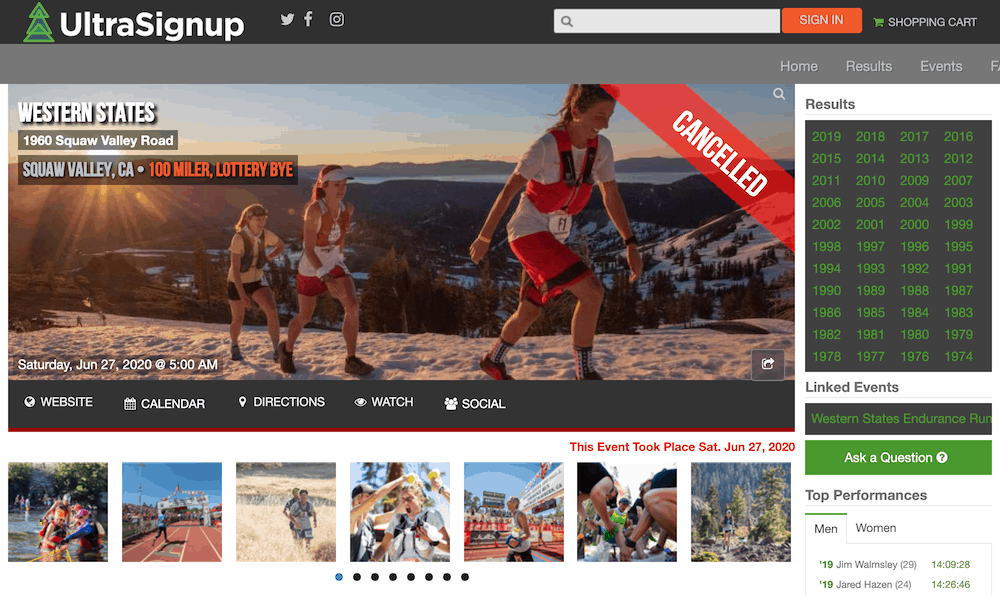
No Lotteries or Waitlists for FKTs
As ultra runners, many of us are accustomed to spending the late fall and early winter months planning and scheming what races we want to try to get into the following summer. Typically, you’d put your name in the hat for a bunch of lotteries, sweat those out, and then when you didn’t get in, you’d immediately register for your backup B-races before those too fill up. I know this process well. I’ll have seven years of tickets for Western States and five years for Hardrock in the next drawings. I’m still not hopeful.
People are fed up with the system. The pinnacle races just don’t have the capacity to satiate all the demand and there’s nothing they can do about it. And now that people have been forced to dig into FKTs, they are realizing how satisfying they can be. Sure, there’s added planning and preparation, gear requirements, crew logistics, and route recon, but if you really want to do an FKT, you can at least take your swing. You’re in the driver’s seat, not the Forest Service permitting caps.
That said, FKTs aren’t going to be for everyone. The beauty of a race is that you get to show up with your pack, you have the comfort of a lot of other crazy people with you, there are these magic aid stations along the way, and the course is typically excellently marked. You can essentially click off your brain and just focus on the effort and beauty around you. FKTs require a deeper level of engagement and a greater use of the five senses. It’s up to you to decide if you want any part of that.
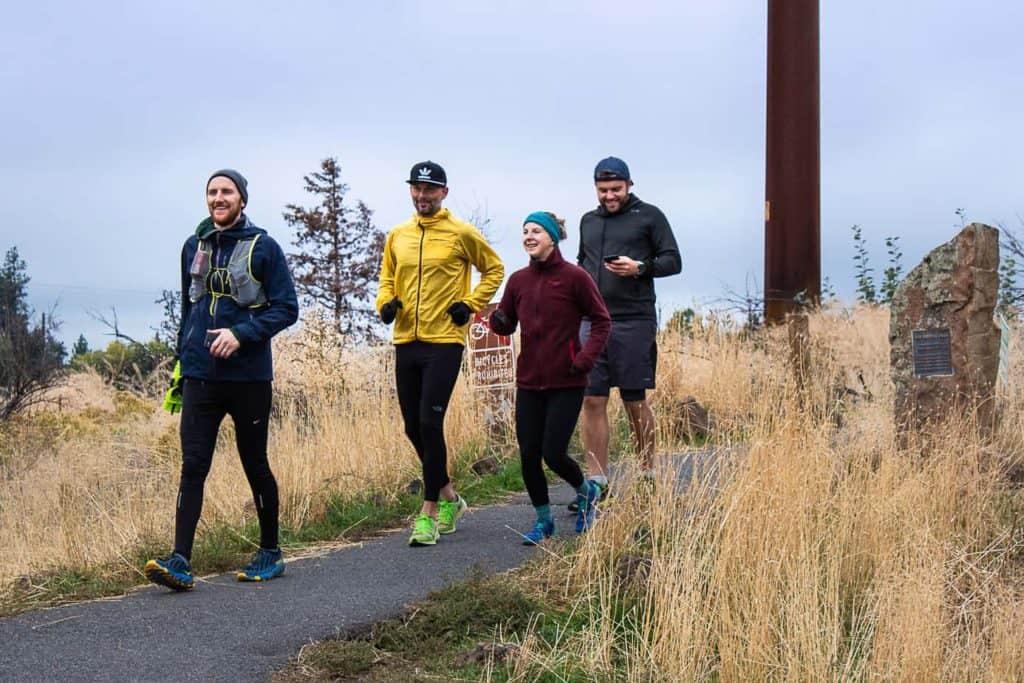
FKTs Have Added Meaning for Local Communities
When someone goes for an FKT in your community, perhaps on a trail that you’ve personally run, it’s so much easier to relate to than a time or performance on a contrived race course of a particular distance. Oftentimes races have weird out and backs, make detours to access roads for aid stations, and are created with traditional distances of 50k, 50m, 100k, or 100m in mind. For FKTs, it’s the topography and interesting features of the landscape that dictate what makes sense to add to the objective. And that’s pretty cool.
Recently, Anton Krupicka posted a tribute to fellow Coloradan, Kyle Richardson, congratulating him on his FKT up and down Long’s Peak, a 14er fairly close to Boulder, Colorado. Anton gushed over the technicality of the route, the crux points, and tried to summarize for his 186k instagram followers how great of an achievement this was. Listen, I’ll take Anton’s word for it, but Long’s Peak, while I’m certainly familiar with its popularity and prestige for Colorado front-rangers, I’ve never seen it! When I saw the time of 1h 55m, I had no context for the effort. Only locals or those that have been there can really appreciate what Kyle achieved. Now, if someone were to take down Max King’s Strava Segment CR (not on the FKT website) on the South Sister climb outside of Bend, I’d be gushing about it too.
It’s the firsthand knowledge that really draws in the community and builds a particular FKT into the local running lore. Races can feel sort of clubby, or elitist to a non-runner, but if you can stand there and point out the line or describe the route based on terrain or features they know, it becomes accessible. Anyone can go do it at anytime they choose, and without the pressure of the racing spectacle.
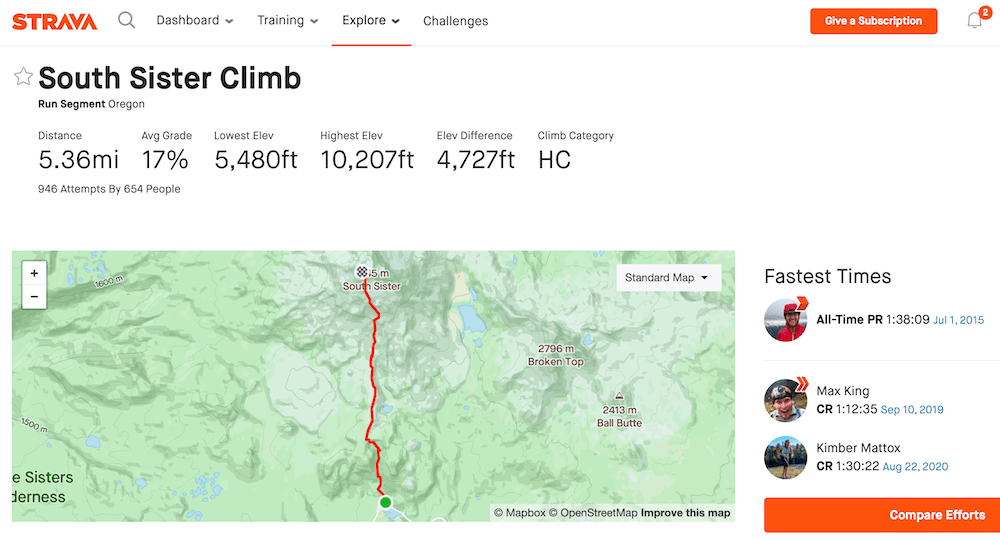
FKTs Pair Well With Modern Technology
Trigger #2! STRAVA SEGMENTS ARE AWESOME. That said, not all Strava course records (CRs) are worthy of the title FKT, and that’s why we should all be so thankful to Buzz Burrell and Peter Bakwin for formalizing the FKT movement and serving as database kings and tracking/filtering czars.
I think I got my first GPS watch in 2007, an early model Garmin. Prior to GPS technology all you had was your word and eye witnesses. While GPS data can be manipulated, you’d have to be a pretty pathetic conman to create a GPX file exaggerating your performance. I have been seeing a lot of people parsing together multiple files lately, say one runner’s watch dies, you can pull the data from your partner’s GPS and compile it into one file for upload to Strava. This is fine, but it worries me a little bit as people get more and more savvy/creative with it. Let it be known that if Walmsley’s Rim to Rim to Rim or Tyler Green’s new Wonderland Trail FKT falls, and I’ve never heard of you, you better believe I’ll be going all Inspector Gadget on that data.
To give credit where credit is due, the Strava platform is insanely good and it really was segment leaderboards that popularized this style of competition on a global scale. And now we have the FKT database to prioritize those accomplishments into a digestible format with a few guidelines and bumpers to work within.
Devices that facilitate live tracking are another huge piece of technology on the FKT front. Recently, Courtney Dauwalter put on a clinic for how to do live tracking right on her multiday Colorado Trail FKT attempt. She was able to include waypoints on her map for the locations that the existing FKT record holder reached each day, so we knew exactly how she was doing, how much time she’d gained on him, and what kind of pace she needed to maintain to get the record. It was awesome! There’s still a ways to go here with server downtime and spotty GPS satellite connectivity being two of the major obstacles to a high-quality viewer experience.
As a fan, I will forever encourage elites to use a live tracker. Sure, there are added logistics, added weight in the GPS unit itself, and even added pressure in knowing there is literally a live-audience out there, but if this sport is going to grow to a level where it justifies something like TV coverage at races, and more sponsorship dollars going to elites, then in my opinion, letting fans into an FKT experience is a small price to pay for incremental growth and engagement by the ultrarunning and greater sports communities at large.
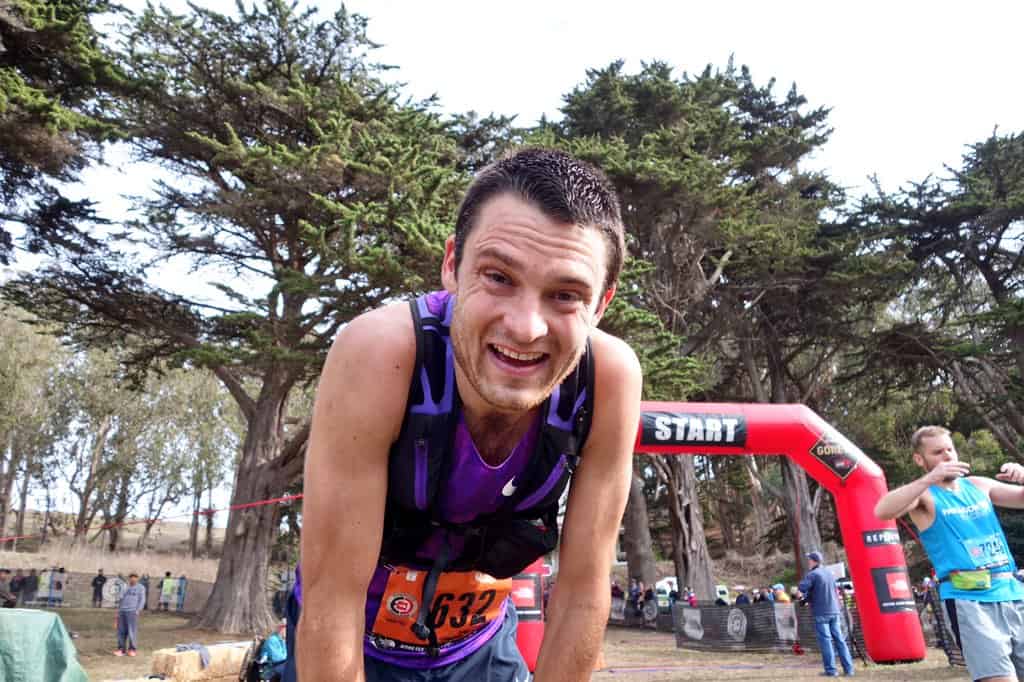
Are You a Racer or an FKT Chaser?
I’m clearly supporting the FKT movement here, but I’m also firmly rooted in the racing camp. I do believe the gap between your mainstream ultra runner and FKTer is going to continue to widen as more people transition from road to trail to ultrarunning, but that doesn’t mean we can’t keep all of these styles of running and pursuits bonded. I appreciate the more extreme, mountainous, technical side of the sport and just hope that we don’t lose our attraction to those types of athletes. FKTs might be the only thing that keep their trajectories from going full-on mountaineering or climbing.
Interestingly, back in January, before Covid hit, an FKT heavy hitter, Ryan Ghelfi, announced he was essentially done with organized races and that he was going to focus on FKTs almost exclusively. He laid out his objectives for the year and it sounded like access to wilderness areas was one of the major points of intrigue for him. He wanted more beauty, more remote areas, more adventure. Covid has spurred on others to follow his lead; only time will tell what kind of future this fissure will create.
If FKTs are resonating with you, the world really is your oyster. There are endless possibilities out there for you to dream up and go after. Maybe you don’t have a premier FKT route in your backyard, but you have something in mind that makes sense and inspires you personally. Do it! And who knows, you might just find your thing in FKTs and never look back.
Call for comments: What are your thoughts? Have any of you done an FKT for the first time in 2020? What did it look like for you? How did the experience compare with that of races? Comment below!
Enjoy this article? Consider supporting us via Patreon for as little as $2 a month. We appreciate your support. It goes a long way in keeping Treeline Journal afloat!


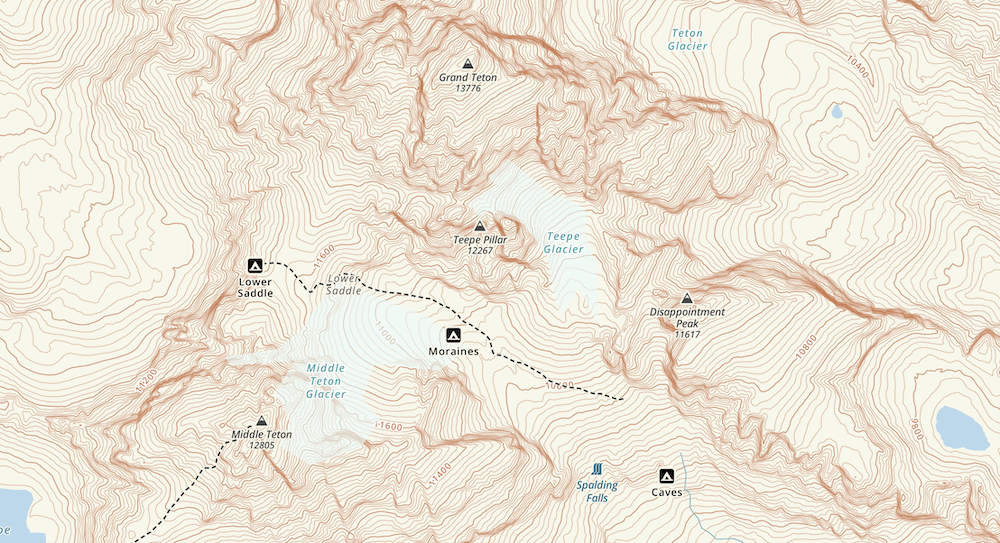
1 thought on “The FKT Reformation”